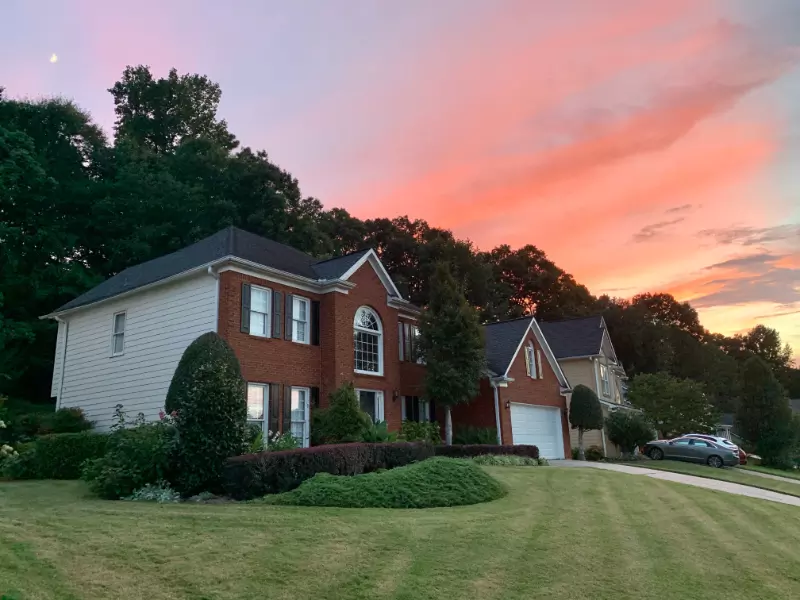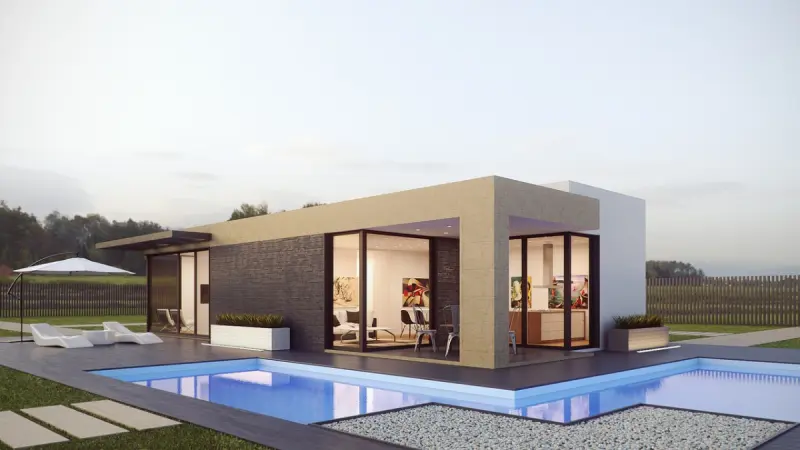What are types of exterior decorating? This article looks at the best time to paint the exterior of a house and if painting exterior brick is a good idea. Find out more about how to choose outdoor paint.
When is the Greatest Time to Paint a House's Exterior?
Although some manufacturers have introduced paints that allow painting outside of this window, drying periods are longer in colder weather, and walls may be moist. You should ideally have a stretch of stable, dry weather. Typically the ideal moment. It would be between the months of mid-April and October, but it would depend on the weather.
The humidity in the air is the main obstacle to external decoration. If the air is excessively wet, paints take longer to dry and cure, failing the paint coating immediately, though this may not be visible right away. The temperature should preferably be above 8 degrees, which is another crucial consideration.
Summer and autumn are by far the ideal seasons for outside decorating if you want the best possibility of a long-lasting result. Paints should be given a favourable environment to dry in. It could be feasible to complete exterior decorating outside of these months thanks to paints that some manufacturers have introduced.
An oil-based product can be rather challenging to use and is significantly more expensive than standard paints; it's also important to keep in mind that drying times lengthen in cold weather, and walls may be moist. The ideal time to paint an exterior will always be suggested by a qualified, seasoned decorator.
How to Choose Outdoor Paint:
There are many exterior paints for any surface in your garden; you can discover a paint that works for your surface, whether you're painting wood, brick, or metal.
When selecting the paint to use and the amount of preparation necessary, the condition of the surface is crucial (if any at all). Make sure the surface you're painting over is dry, clean, and in good condition.
Dust, mould, algae, and moss should be removed, and any rust should be sanded down. For the greatest quality and the longest-lasting paint job possible, you might need to apply a primer or undercoat.
Are you looking for a gentler tone or a bright colour to give a splash of colour? Something that beautifully contrasts or merges in beautifully? Do you like to enhance the surface's present look, such as by staining wood to bring out its natural beauty, or do you wish to cleverly conceal it with colour?
Keep in consideration the architecture of your home and the surrounding area. Is it more traditional and classic or more modern and edgy? There are several factors to take into account to help you focus on your colour and finish choices.
The length of time it takes to complete the job will unavoidably depend on how big your house is. A team of two to three persons will need three to four days to paint a typical-sized house.
In this instance, a house with one to two levels and four or fewer bedrooms will be considered "typical." Large homes, including those with three stories or five or more bedrooms, will take five to six days to move.
Is Painting Exterior Brick a Good Idea?
Brickwork may look great painted; using the proper masonry paint is the best method to do this - as long as the proper methods are followed and specialised primers are used, painting brickwork is safe. The decoration will persist and avoid problems down the road if the proper primer is used and sufficient preparation is done beforehand.
As long as you maintain the painting at the intervals advised, you shouldn't experience any problems or troubles; several coatings are available, ranging from smooth to textured finishes.Finally, remember to use external masonry paint when painting bricks so that they may continue to breathe. The incorrect paint, such as a gloss, will seal the brick, causing it to eventually fracture and break as the moisture tries to escape.
Your home will look great and survive a very long time if the right product is used on any surface. Simply ask your decorator, and they will recommend what is ideal.
What is the Price of Painting a House's Exterior?
This is a difficult subject to answer because outside painting and decorating vary so much from job to job, making even a basic estimate inaccurate.
Every exterior decorating project is unique since it is determined by the size, condition, and specifications required to embellish the outside. The majority of jobs pay between £200 and £47,000 per year.
If so, the price will be substantially more than if it were done when it was still in good condition. Your exterior should be painted roughly every four to five years.
This will save you money because it is more of a maintenance paint job than starting from scratch and stripping down to bare wood process, and it will keep your outside looking fantastic throughout the whole year.

Exterior Paint for Masonry, Metal and Wood
These have a high level of protection as well as a natural wood finish. They are more transparent than other woodcare solutions, allowing the whole grain of the wood to show through and may be applied to previously varnished or dyed wood.The exteriors of homes, gardens, and garages may be preserved and decorated with masonry paint.
The front of your house might use some revitalisation to boost curb appeal and provide a positive first impression. Masonry paint is available in a larger variety of colours than you would think, including delicate neutrals like cream and beige, calm and cool tones like grey, green, and blue, and warmer tones like yellow and red. Masonry paint is available in smooth or textured finishes.
For all outside metal surfaces fighting the elements, metal paint provides weather protection. It can be used solely outside, or you can choose one that can be used on both interior and exterior metals to complete two painting tasks at once. Both standard solvent-based paints and quick-drying water-based paints are available from us.
Types of Exterior Paint:
Wooden sheds, fences, decks, garden furniture, garden storage, playhouses, and other constructions are all suitable for wood care. There are four alternatives for protecting and colouring external wood: paint, stains, varnish, and oil; many of these goods are designed specifically for specific locations or jobs.
Exterior wood paint adds a splash of opaque colour and is available in a wide variety of colours - look for ones that resist cracking and scorching even after extended exposure.
Exterior wood stain allows the natural wood grain to show while yet providing colour; they seep into the wood and provide weather protection.
Exterior wood oil nourishes the wood by restoring natural oils lost due to weather exposure and protecting the finish - they're a popular decking material since they protect against foot traffic. Oil might take longer to dry, so read the product specifications and prepare accordingly.
These have a high level of protection as well as a natural wood finish. They are more transparent than other woodcare solutions, allowing the whole grain of the wood to show through and may be applied to previously varnished or dyed wood. Be sure to choose between a clear varnish, which merely preserves and gives a gloss to the surface, and a coloured varnish, which enhances or modifies the original colour of your wood.
Masonry paint protects and beautifies the exteriors of buildings, gardens, and garages. It can help to revitalise the front of your property to improve kerb appeal and make a positive first impression. Masonry paint is available in smooth or textured finishes, as well as a larger spectrum of colours than you may think, including subtle neutrals like cream and beige, cool and soothing shades like grey, green, and blue, and warmer tones like yellow and red.
Metal paint provides weather protection for any exterior metal surfaces that are exposed to the elements; it's available for use exclusively outside, or you can get multi-purpose ones that can be used on both interior and exterior metals to save time on painting work.
This is for non-rusting metals such as galvanised steel, aluminium, copper, and brass. It's designed to be applied straight without preparation and comes with an integrated finish.
This paint is intended for use on metal surfaces when the rust has not been completely removed. Although a primer is not usually required, you should clean and sand down the rusted area before applying the paint.
Do you require exterior house painting services in Edinburgh?
Then W. Martin can help. No matter the scale of the project, our professional team are on hand to help. If you need our services, do not hesitate to get in touch and contact our team today.

